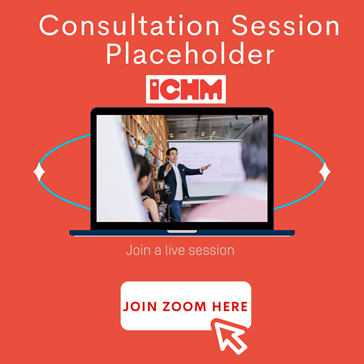Welcome to Topic 9: #HearUsOut. In this topic you will learn about:
- What promotion is
- Effective marketing communication
- Promotional tools
- Selecting the tools.
You can have the best product that delivers the best value, but consumers will not buy it if they are unaware of it. This topic explores and examines another element within the marketing mix – promotion – which refers to communicating the value of a product to win customers over.
These relate to the Subject Learning Outcomes:
- Evaluate market conditions and consumer needs when forming marketing strategies.
- Describe a range of common strategies for use with each of the various marketing mix tools: product, pricing, promotion, and distribution.
- Recommend and justify an appropriate mix of such strategies to form a cohesive overall strategy to address given marketing tasks or situations.
Welcome to your pre-seminar learning tasks for this week. Please ensure you complete these prior to attending your scheduled seminar with your lecturer.
Click on each of the following headings to read more about what is required for each of your pre-seminar learning tasks.
Read the following from Kotler, P & Armstrong, G 2021, Principles of Marketing Global Edition, 18th edn., Pearson:
- Chapter 14 (pp. 408-425)
- Chapter 15 (all)
- Chapter 16 (all)
- Chapter 17 (pp. 492-509).
Read the following journal articles:
- Luck, E & Moffatt, J 2009, ‘IMC: has anything really changed? A new perspective on an old definition’, Journal of Marketing Communications, 15(5):311-325.
- Batra, R & Keller KL 2016, ‘Integrating marketing communications: new findings, new lessons, and new ideas’, Journal of Marketing, 80(6):122-145.
Read the following web articles and industry reports:
- Greenwald, M 2014, Secrets of 7 of the most effective ad campaigns, Forbes
- Hunt, H 2018, What is public relations? A comprehensive PR guide, G2
- Siu, E n.d., When does it make sense to hire sales reps for your business?, Single Grain
- Nicasio, F 2021, 8 types of sales promotions in retail (and how to implement them), Vend
- Carmicheal, K 2021, The best integrated marketing campaigns, according to HubSpot marketers, HubSpot
- Llewellyn, G 2021, Four steps to developing a big idea for your campaign [belVita Case Study], Smart Insights
Read the following case studies:
- ‘Nestlé: Integrating Marketing Communication into Daily Operations’ on p. 432 of the prescribed text.
- ‘Spot the Difference’ on p. 489 of the prescribed text
Read and watch the topic content.
There are discussion forum activities for this topic, which will enhance your knowledge and give you the opportunity to interact with your peers. You can access the activities by clicking on the following links. You can also navigate to the forum by clicking on 'MKT100 Subject Forum' in the navigation bar for this subject.
- Topic 9: Forum Activity 1 - Advertising messages
- Topic 9: Forum Activity 2 - Case study 1
- Topic 9: Forum Activity 3 - Case study 2

What is promotion?
Promotion is all about communication – communicating a message or an idea to an audience. From a marketing perspective, this marketing mix element aims to inform, persuade or remind the target market about the organisation and its products with the ultimate goal of influencing consumers’ feelings, beliefs or behaviours (Rix 2007). For example, to attract or retain consumers, companies will communicate the value or benefit they deliver through elements we mentioned in our earlier topics, such as product features, pricing and convenience.
To communicate value to customers, companies use various promotional tools, also known as marketing communication tools, which can be categorised into five different types (Kotler & Armstrong 2021):
- Advertising
- Sales promotion
- Personal selling
- Public relations (PR)
- Direct and digital marketing.
With consumers increasingly interacting with companies across multiple platforms, these promotional tools must work together in sending out a clear, consistent and unified message about the company. This approach with a carefully blended mix of various promotion tools is known as integrated marketing communication (IMC) and is illustrated in the following figure.
Adapted from Principles of Marketing Global Edition, by P Kotler & G Armstrong, 2021, 18th edn. Copyright 2021 by Pearson Education Limited.
Effective marketing communication
The promotional strategy should be tailored to our target market/audience. (No surprises here – everything we do is centred around them!). This includes finding out which media platforms they frequently use and the messages that resonate with them. Our target market may not be aware of us. Or perhaps they do know about us but do not purchase from us. These two different scenarios may call for a different approach and message.
Before we think about and start planning for any promotional efforts, we need to determine the objectives we want to achieve. The objectives will generally fall under three categories, informing, persuading and reminding. For example, to launch a new brand or product, attract a new group of customers, or change the perception of a brand.
When putting together a message, there are two things to consider, what we say and how we say it. For the content itself, there are three main types of appeals (Kotler & Armstrong 2021):
- Rational: Generally more informative and use a product’s features, qualities, benefits or values to convey the message.
- Emotional: Messages designed to bring up the emotions of receivers.
- Moral: Messages used to urge or support social and environmental causes.
Activity
Watch the following commercials for the same product category but with vastly different messaging. Can you name the rational, emotional and moral appeal for each laundry detergent? Record your findings in your reflective journal.
New & Improved OMO
OMO Ultimate
Arm & Hammer
While there are different appeals, these messages all serve the same purpose: to let consumers better understand the company, its offerings and the value of its offerings. An easy way to think about what to say is by looking at the company’s positioning, differentiation and value proposition, which is what the company does differently and particularly well compared to their competitors.
Once these messages are determined, the medium and how it is delivered will need to be considered. Will it be audio, a still image or a moving video? Will this be communicated through media channels such as television, social media or through a person such as the sales team or a social media influencer?
Promotional tools
Each promotion tool serves a different purpose for companies. We will explore each of them to better understand their specific and unique characteristics and its roles within the overall promotional mix.
Advertising

Advertising is defined as “any paid form of nonpersonal presentation and promotion of ideas, goods, or services by an identified sponsor” (Kotler & Armstrong, p. 436). Sponsors refer to any companies paid to carry the messages, which are usually media companies that run television channels, radio stations, newspapers, magazines, etc. Each of these mediums has its advantages and disadvantages.
As with any effective use of the different promotional tools, it must all start with the target audience in mind and the objectives a company would like to achieve. The messages and the medium to deliver the message will be clearer once the target audience and objectives have been determined. The following table specifies the different advertising objectives and some examples:
| Advertising objectives | Examples |
|---|---|
| To inform |
|
| To persuade |
|
| To remind |
|
Adapted from Principles of Marketing Global Edition, by P Kotler & G Armstrong, 2021, 18th edn., by Pearson Education Limited.
Have you ever wondered what makes a good advertisement?
The following video explains the psychology behind good advertising.
Public relations
Public relations (PR) is a set of communication efforts aimed at creating a favourable image of a company and building relationships with its various stakeholders such as customers, employees, stockholders, government officials, the media and the general public (Pride et al. 2012). While advertising is paid for, PR is a form of media that is earned.
Media companies need engaging and meaningful content to retain their readers. These contents are centred around what their readers would like to see (for example, the latest product or a fun fact or a behind-the-scenes tour). Any stories that can generate interest among readers are of value to media companies (Wynne 2016). If a company can pitch their story or idea, making it newsworthy or creating a buzz, then the media companies can share it with their readers. It is a win-win situation for both parties.
Working and pitching to the media is just an example of one PR tool. Other PR tools include event sponsorship, news release, press conferences and crisis management. For a more detailed explanation and examples of the various PR tools, please refer to the pre-seminar web article by Hunt (2018).
Personal selling
Personal selling involves interaction between the sales representatives of a company and its prospective customers to sell a product. From the name itself, we can deduce that it is rather personal because transactions are often facilitated by nurturing relationships between people (Pride et al. 2012). Some examples of personal selling include participating in trade shows, sales pitches or presentations and cold calling.
The following table specifies the features of personal selling and its advantage or disadvantage to organisations:
| Feature | Advantage/disadvantage |
|---|---|
| Flexibility | Salespeople can tailor their messages to fit the needs and behaviour of individual customers. |
| Responsiveness | Salespeople can see their customers’ reactions to a particular question or statement and adapt on the spot. |
| Focus | Sales presentations are focused on genuinely interested individuals, thus minimising wasted effort. |
| Ability to demand a response | Salespeople can compel a response from the prospective customer. |
| Establishment of relationships | Salespeople can develop genuine and ongoing relationships with customers, leading to more sales. |
| Costs | Hiring a sales force can be expensive, involving costs such as salaries, commissions and expenses. |
Adapted from Marketing: a practical approach, by P Rix, 2007, 6th edn., Copyright 2021 by McGraw Hill Australia Pty Limited.
Sales promotion

Sales promotion refers to the incentives given to promote and increase the sales of a product, usually on a short-term basis. While advertising lays out the reasons to buy a product, sales promotion aims to get customers to buy now (Kotler & Armstrong 2021). A sales promotion will either allow customers to purchase a product at a lower price, for example, 10 % off, or at a better value, for example, buy one get one free deal (Nicasio 2021).
A sales promotion is usually used in conjunction with other promotional tools such as advertising and direct (email) marketing. What is the point of having a sales promotion if your customers are not aware of it?
For a full list of sales promotion tools, please refer to the pre-seminar tasks.
Direct marketing
For promotional tools such as advertising and public relations, companies will either need to pay or earn exposure from media companies to get their messages across. Direct marketing cuts out these third parties and communicates directly with the customers. Traditionally this would be mail catalogues, mail or telemarketing. However, in this day and age, digital tools drive direct marketing, for example, websites, social media, and mobile applications (Kotler & Armstrong 2021).
The following video demonstrates how Sephora, a cosmetics and skincare retailer, markets products through their own mobile application by rewarding and providing content to their customers.
Knowledge check
Complete the following four (4) tasks. Click the arrows to navigate between the tasks.
Selecting the tools
An effective marketing communication requires the right combination of promotion tools (promotional mix) such as advertising, public relations, personal selling, sales promotion and direct marketing all working together. Selecting which tools to use will depend on several factors.
The target market
For B2B markets with fewer buyers and transactions involved, such as selling to other companies or intermediaries, personal selling is preferred over other promotional tools. However, when the customers are geographically widely spread, and a mass method is required to reach a large number of them, tools such as advertising and sales promotion are typically used (Pride et al. 2012).
The choice of media for advertising is also influenced by the demographics of the target audience (Pride et al. 2012). For example, if the target audience is teenagers, social media like TikTok may reach more of them. If children are the target audience, then the television commercial slot should be outside school hours.
The product lifecycle
Depending on the stage in which a product is in its lifecycle, different promotional strategies may be required. The following figure and table detail the different lifecycle stages and their corresponding strategy.
| Introduction | Growth | Maturity | Decline | |
|---|---|---|---|---|
| Characteristics of the stage | Consumers are unaware of the product and what it does | More and more consumers start accepting the product | Competition intensifies in the market | Sales and profit decline as better products are introduced |
| Promotional strategy | Focus on building awareness and educating customers about the benefits. Need to persuade intermediaries to stock the product through personal selling. | Advertising is aimed at creating mass brand awareness and preference. | Use advertisement to differentiate the brand and persuade customers. Heavy sales promotion to encourage brand switching. | Minimum promotion effort and emphasise low price. |
Adapted from Marketing principles, Asian Pacific Edition, by WM Pride, OC Ferrell, BA Lukas, S Schembri & O Niininen 2021, Copyright 2012 by Cengage Learning Australia Pty Limited.
The product characteristics
A product that requires a more personalised rather than mass approach would be suited for personal selling since it is more of a consultative effort rather than pushing the same message across to the customers. Personal selling is also required for products that require more pre-sales and post-sales services (Rix 2007). For example, selling highly specialised software or an event package will require more flexibility from the human input in communicating the value to the customer based on their needs rather than highlighting all the benefits through a radio advertisement, which may differ depending on the customer.
The costs of promotional tools
Some promotional tools are more expensive than others, for example, a national advertising and sales promotion. Smaller companies or start-ups generally focus their attention on more affordable modes such as direct marketing through social media (Rix 2007).
Knowledge check
Complete the following two (2) tasks. Click the arrows to navigate between the tasks.
Key takeouts
Congratulations, we made it to the end of the ninth topic! Some key takeouts from Topic 9:
- Promotion is a marketing mix element that aims to inform, persuade or remind the target market about the organisation and its products with the ultimate goal of influencing consumers’ feelings, beliefs or behaviours.
- The message of promotional activities is determined by the objectives and the target audience.
- There are many promotional tools that companies can use, such as advertising, sales promotion, personal selling, public relations and direct & digital marketing.
- The combination or mix of promotional tools is known as an integrated marketing communication approach, and the message across different tools should be clear and consistent throughout.
Welcome to your seminar for this topic. Your lecturer will start a video stream during your scheduled class time. You can access your scheduled class by clicking on ‘Live Sessions’ found within your navigation bar and locating the relevant day/class or by clicking on the following link and then clicking ‘Join’ to enter the class.
Click here to access your seminar.
The learning tasks are listed below. These will be completed during the seminar with your lecturer. Should you be unable to attend, you will be able to watch the recording, which can be found via the following link or by navigating to the class through ‘Live Sessions’ via your navigation bar.
Click here to access the recording. (Please note: this will be available shortly after the live session has ended.)

In-seminar learning tasks
The in-seminar learning tasks identified below will be completed during the scheduled seminar. Your lecturer will guide you through these tasks. Click on each of the following headings to read more about the requirements for each of your in-seminar learning tasks.
Try integrated marketing communication for yourself! Working in a breakout room assigned by your lecturer during the scheduled seminar, play this IMC Hero simulation multiple times to see how different choices lead to different outcomes.
Discuss the decisions you have all made with your group members and reflect on key learnings from this activity. Your lecturer will request that you present the reflections back to the class.
In this learning task, you will put what you have learned into practice and brainstorm a marketing campaign idea for an organisation of your choice in the same breakout room as before. Using the framework as proposed in the pre-seminar article by Llewellyn (2021), answer the following questions to develop the next big idea:
- What is it called?
- What is it?
- Why can this product do this?
- How will it come to life?
Your lecturer will request that you present the findings back to the class.
Welcome to your post-seminar learning tasks for this week. Please ensure you complete these after attending your scheduled seminar with your lecturer. Your lecturer will advise you if any of these are to be completed during your consultation session.
Click the following headings to learn more about your post-seminar learning tasks.
Reflect on this topic. Prepare a list of key terms with their definitions and summarise the key points in your own words. Share these with your lecturer in your reflective journal.
You can also access the reflective journal by clicking on ‘Journal’ in the navigation bar for this subject.
Focus on collecting and reading relevant resources for Assessment 3.
Each week you will have a consultation session, which will be facilitated by your lecturer. You can join in and work with your peers on activities relating to this subject. These session times and activities will be communicated to you by your lecturer each week. Your lecturer will start a video stream during your scheduled class time. You can access your scheduled class by clicking on ‘Live Sessions’ found within your navigation bar and locating the relevant day/class or by clicking on the following link and then clicking 'Join' to enter the class.
Click here to access your consultation session.
Should you be unable to attend, you will be able to watch the recording, which can be found via the following link or by navigating to the class through ‘Live Sessions’ via your navigation bar.
Click here to access the recording. (Please note: this will be available shortly after the live session has ended.)

- Jones, JP 1990, The double jeopardy of sales promotions, Harvard Business Review
- Reinartz, W & Saffert, P 2013, Creativity in advertising: when it works and when it doesn’t, Harvard Business Review
References
- Batra, R & Keller KL 2016, ‘Integrating marketing communications: new findings, new lessons, and new ideas’, Journal of Marketing, 80(6):122-145.
- Carmicheal, K 2021, The best integrated marketing campaigns, according to HubSpot marketers, HubSpot, https://blog.hubspot.com/marketing/our-favorite-integrated-marketing-examples
- Greenwald, M 2014, Secrets of 7 of the most effective ad campaigns, Forbes, https://www.forbes.com/sites/michellegreenwald/2014/07/10/secrets-of-7-of-the-most-effective-ad-campaigns/?sh=58c4a406320c
- Hunt, H 2018, What is public relations? A comprehensive PR guide, G2, https://www.g2.com/articles/pr
- Kitchen, PJ 2005, ‘New paradigm – IMC – under fire’, Competitiveness Review, 15(1):72-80.
- Kotler, P & Armstrong, G 2021, Principles of Marketing Global Edition, 18th edn., Pearson.
- Llewellyn, G 2021, Four steps to developing a big idea for your campaign [belVita Case Study], Smart Insights, https://www.smartinsights.com/traffic-building-strategy/campaign-planning/four-steps-developing-big-idea-campaign/
- Nicasio, F 2021, 8 types of sales promotions in retail (and how to implement them), Vend, https://www.vendhq.com/blog/sales-promotion/
- Pride, WM, Ferrell, OC, Lukas, BA, Schembri, S & Niininen O 2021, Marketing principles, Asian Pacific edn, Cengage Learning.
- Rix, P 2007, Marketing: a practical approach, 6th edn., McGraw Hill.
- Siu, E n.d., When does it make sense to hire sales reps for your business?, https://www.singlegrain.com/hiring/when-does-it-make-sense-to-hire-sales-reps-for-your-business/
- Wynne, R 2016, Five things everyone should know about public relations, Forbes, https://www.forbes.com/sites/robertwynne/2016/01/21/five-things-everyone-should-know-about-public-relations/?sh=3d4741402a2c

